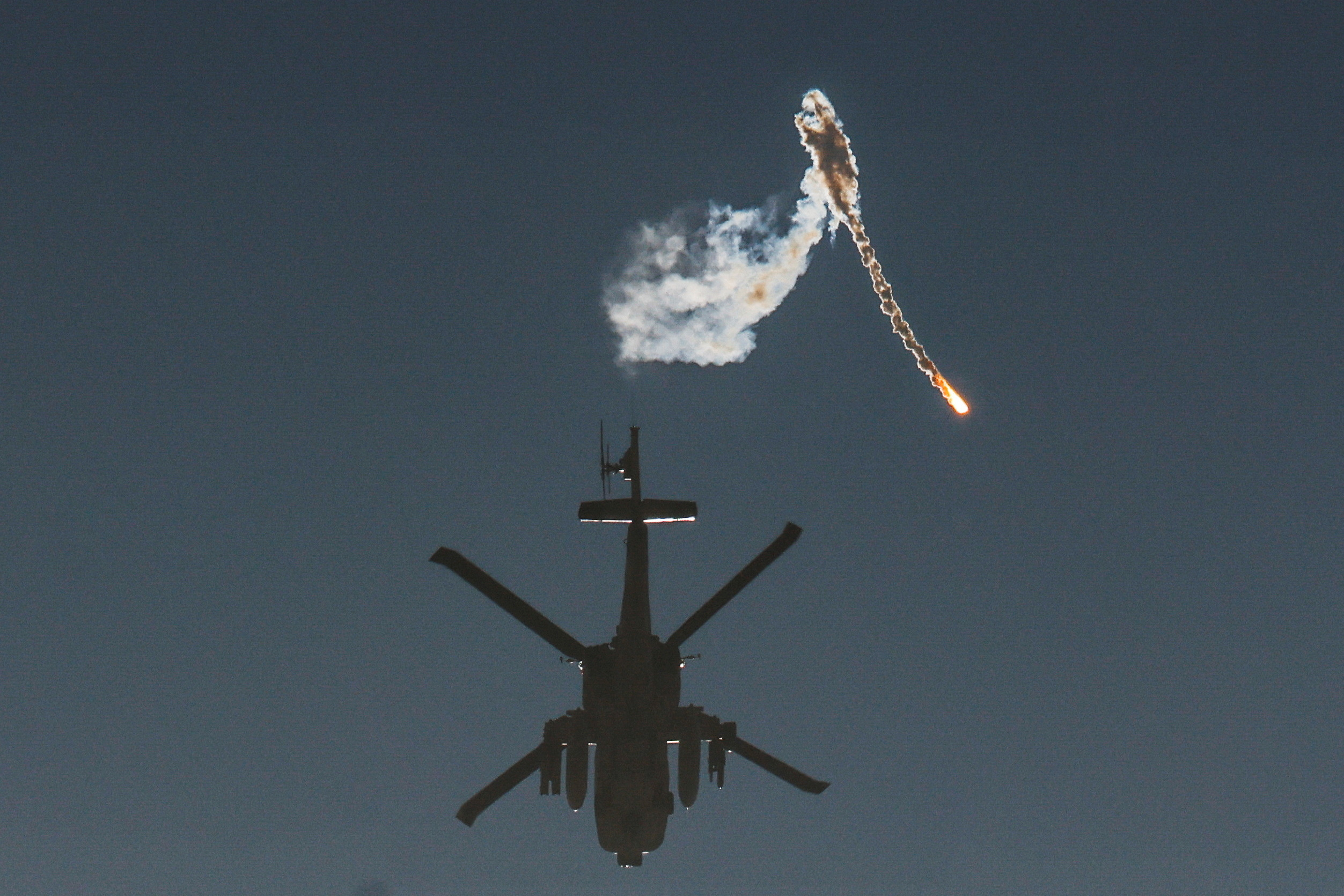Advertisement
2023 GOVERNORSHIP AND
STATE HOUSE OF ASSEMBLY ELECTIONS
- days
- Hours
- Minutes
- Seconds
Advertisement

…Wounded children carried from home in Rafah
Israel’s warplanes pounded Gaza, sending wounded and dead Palestinians into hospitals and residents into the streets to flee, as its war against Hamas resumed after talks to extend a week-old truce broke down.
As the deadline lapsed, Reuters journalists in Khan Younis in southern Gaza saw eastern areas come under intensive bombardment, sending columns of smoke rising into the sky. Residents took to the road with belongings heaped up in carts, fleeing for shelter further west.
In the north of the enclave, previously the main war zone, huge plumes of smoke rose above the ruins, seen from across the fence in Israel. The rattle of gunfire and thud of explosions rang out above the sound of barking dogs.
Rocket sirens also blared across southern Israel as militants fired from the coastal enclave into towns.
Advertisement

Within hours of the truce expiring, Gaza health officials reported that 54 people had already been killed and dozens wounded in air strikes that hit at least eight homes.
Medics and witnesses said the bombing was most intensive in Khan Younis and Rafah in the southern Gaza Strip, where hundreds of thousands of Gazans have been sheltering from fighting further north. Houses in central and northern areas were also hit.
“Anas, my son!” wailed the mother of Anas Anwar al-Masri, a boy lying on a stretcher with a head injury in the corridor of Nasser hospital in Khan Younis. “I don’t have anyone but you!”
Further south in Rafah, residents carried several small children, streaked with blood and covered in dust, out of a house that had been struck. Mohammed Abu-Elneen, whose father owns the house, said it was sheltering people displaced from elsewhere.
At the nearby Abu Yousef al-Najjar hospital, the first wave of wounded were men and boys.
Gazans said they feared that the bombing of southern parts of the enclave could herald an expansion of the war into areas Israel had previously described as safe.
Leaflets dropped on eastern areas of the main southern city Khan Younis ordered residents of four towns to evacuate – not to other areas in Khan Younis as in the past, but further south to the crowded town of Rafah on the Egyptian border.
“You have to evacuate immediately and go to the shelters in the Rafah area. Khan Younis is a dangerous fighting zone. You have been warned,” said the leaflets, written in Arabic.
Israel released a link to a map showing Gaza divided into hundreds of districts, which it said would be used in future to communicate which areas were safe.

SIDES BLAME EACH OTHER FOR COLLAPSE
Each side said the other had rejected terms to extend the truce, which had involved freeing hostages seized by Hamas and other militants in the deadly Oct. 7 raid into Israel that precipitated the war, and the release of Palestinians held in Israeli jails.
“With the resumption of fighting we emphasise: The Israeli government is committed to achieving the goals of the war – to free our hostages, to eliminate Hamas, and to ensure that Gaza will never pose a threat to the residents of Israel,” the office of Israeli Prime Minister Benjamin Netanyahu said.
A Palestinian official familiar with the Israel-Hamas third-party talks said they collapsed overnight over Israel’s demand that Hamas free female soldiers, whom he said were completely separate from the hostages. There was no immediate comment from Israel.
The pause which began on Nov. 24 and was extended twice, had allowed for daily exchanges of Israeli hostages held in Gaza for Palestinian detainees, while trucks brought in aid.
Israel, which rejects calls for a permanent ceasefire, had said the temporary truce could continue as long as Hamas released 10 hostages each day. But after seven days during which women, children and foreign hostages were freed, mediators failed at the final hour to find a formula to release more.
Qatar, which has played a central role in mediation efforts, said negotiations were still ongoing with Israelis and Palestinians to restore the truce, but that Israel’s renewed bombardment of Gaza had complicated its efforts.
Israel has sworn to annihilate Hamas in response to the Oct. 7 rampage by the militant group, when Israel says gunmen killed 1,200 people and took 240 hostages. Hamas, sworn to Israel’s destruction, has ruled Gaza since 2007.
Israel’s bombardment and ground invasion have laid waste to much of the territory. Palestinian health authorities deemed reliable by the United Nations say more than 15,000 Gazans have been confirmed killed and thousands more are missing and feared buried under rubble.
The United Nations says as many as 80% of Gaza’s 2.3 million have been driven from their homes, with no way to escape the narrow territory, many sleeping rough in makeshift shelters.
Israel has imposed a total siege, and residents and humanitarian agencies say aid that arrived during the truce was trivial compared to the vast needs of so many displaced people.
U.S. Secretary of State Antony Blinken, who had met Israeli and Palestinian officials on Thursday on his third trip to the region since the war began, declined to comment on the collapse of the truce to reporters travelling on his plane.
The day before, Blinken had called on Israel to do more to protect civilians once fighting resumes. He had praised the truce and said Washington hoped it would be extended.
Reuters
Disclaimer
Contents provided and/or opinions expressed here do not reflect the opinions of The Pacesetter Frontier Magazine or any employee thereof.
Support The Pacesetter Frontier Magazine
It takes a lot to get credible, true and reliable stories.
As a privately owned media outfit, we believe in setting the pace and leaving strides in time.
If you like what we do, you can donate a token to us here. Your support will ensure that the right news is put out there at all times, reaching an unlimited number of persons at no cost to them.
Related posts
Stay connected
Recent News
Naira gains little as EFCC fights speculators
Advertisement The naira regained strength against the haven currency over the weekend, breaking below the N1,300 resistance level at the…
JAMB set to release 2024 UTME results
Advertisement The Joint Admissions and Matriculation Board has concluded plans to release the results of the 2024 Unified Tertiary Matriculation…








